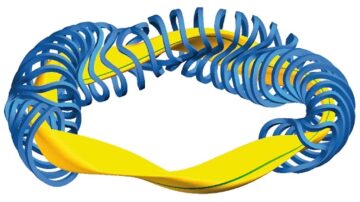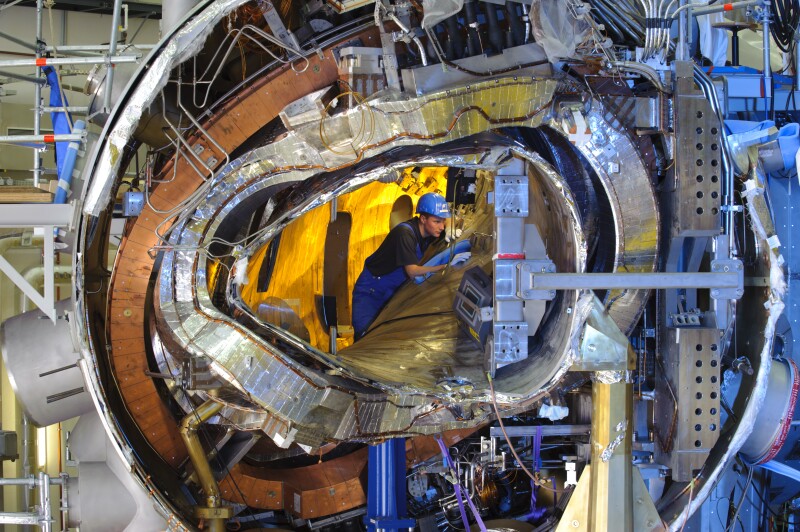Cargo-container-size nuclear fusion facilities that can work on- or off-grid could be an answer to the mass production of recharging stations for electric vehicles (EVs).
An Israeli startup, NT-Tao, is engineering a compact and scalable nuclear fusion energy technology that combines the best of the two competing technologies (tokamak and stellarator) that confine plasma within magnetic fields to create a fusion reaction.
Honda Motors, Mitsui Sumitomo Insurance Venture Capital, and others have invested in NT-Tao, which has raised $28 million to date, according to an article published in January on NikkeiAsia.com.
Honda is eyeing fusion to power EV charging stations, and NT-Tao claims its facilities could charge up to 1,000 vehicles at a time. Since the units could operate on- or off-grid, they could also power data centers and factories.
According to NT-Tao CEO Oded Gour-Lavie, the estimated investment for a 20,000-kW unit is $70 million to $100 million, and costs of generating electricity would be 6 to 13 cents per kWh.
Leveraging the Best of Both Worlds
Both tokamak and stellarator technologies use magnets to confine plasma in a donut shape called a torus. Stellarators require less power to sustain the plasma than tokamaks and offer design flexibility. But stellarator magnetic coil systems are more complex, according to the US Department of Energy (US DOE).
Scientists are applying high-performance computing to state-of-the-art plasma theory to help researchers optimize the Helically Symmetric Experiment stellarator at the University of Wisconsin’s College of Engineering in Madison, and the Wendelstein 7-X stellarator at the Max Planck Institute for Plasma Physics in Germany, US DOE points out.

Last April, Italian energy major Eni and MIT spinoff Commonwealth Fusion Systems signed a collaboration framework agreement to launch the world’s first pilot fusion power plant based on magnetic confinement in 2025 with an eye towards connecting industrial-scale plants to the grid by the 2030s.
While Eni focuses on developing megaplants to provide fusion power to the grid, NT-Tao is developing compact units that work off-grid as well as on-grid using its proprietary technology borrowed from the best of both the tokamak and stellarator approaches.
NT-Tao’s goal is to create an ultrafast plasma heating method that enables its fusion reactors to reach 1,000 times higher density than existing technologies, thereby making the reaction 1 million times more efficient in terms of energy production, the company said.
Teaming Up With Princeton E-ffiliates
In May 2023, the Israeli startup became the first fusion technology firm to join Princeton University’s E-ffiliates Partnership, a membership program administered by Princeton University's Andlinger Center for Energy and the Environment, according to a news release.
The relationship gives NT-Tao access to a community of energy and environmental innovation strategists at Princeton, notably fusion expert Egemen Kolemen, an associate professor of mechanical and aerospace engineering at the Andlinger Center and staff research physicist at Princeton’s Plasma Physics Laboratory.
The company’s Series A investment round announced a year ago in February attracted not only Honda but also Delek US, Next Gear Ventures, and Mayer Cars & Trucks Group, with additional participation from the Grantham Foundation (the lead investor in the company’s seed round), J-IMPACT, East Innovate (the venture capital arm of East Alpha), and OurCrowd, Reinsurance News reported in September.
The Israel government has also provided financial support.
In December 2022, scientists at California’s Lawrence Livermore National Laboratory used lasers to extract more energy than was put into its fusion reactor (thus achieving fusion ignition) for the first time, using a technology known as inertial confinement, which is an alternative to magnetic confinement.
Inertial confinement employs lasers to generate energy from a series of discrete fusion reactions producing a burst of energy each time and confining the fuel by its own inertia, while magnetic confinement seeks to create a stable continuous plasma.
Scientists at Livermore then repeated the experiment on 30 July 2023, according to press reports.



